Introduction
Landscapes, Romanesque and Geology
This path from Rupit to Salt de Sallent is an alternative proposal for descent and climbing along the classic path of the stream. We can enjoy the spectacular views of all the sun decks and eastern cliffs of “Collsacabra” to the cliff of the Lighthouse, over the “Susqueda” water reservoir. A visit to the Romanesque well represented by “St. Joan de Fàbregues” to the south of Rupit until reaching “Salt de Sallent”. Going back through the Rupit stream, discovering the vegetation and looking at the footprints of the “Molí del Rodor” and its cliff.
We recommend the Local Natura App to do this route. Download it for free here:
Apple store Google Play

-
TypologyAnti-clockwise circular
-
DifficultyEasy
-
Duration2 hours 10 minutes
-
Slope290.00 meters
-
Distance6.50 km
-
ThemeFlora and faunaLandscapingGeologia
-
ActivityBy foot
-
Rating
Slope graph

Description
Landscapes, Romanesque and Geology
We leave the Rupit road to “St. Joan de Fàbregues” we have views of the wooden hanging bridge over the Rupit stream. We turn off at the hill and church of “Sta. Magdalena”. The views over the town and the “Agullola” cliff are worth it.
Now we go down the stream and we follow it down on the right-hand side, without seeing the water, in a shady oak grove and below the hazel trees, booms, polypods and ivy on the ground. We hear the rumor of the water in the jumps of the “Rodor” mill that we will later see.
We go up to the track and back to take a less frequented one that will climb up the “Palomera”. A whole wet forest of lime trees, ash trees, some chestnut trees, and hazel trees accompany us along a pleasant cobbled path.
Spectacular views over the “Bassis” plain viewpoint. All the cliff from “Agullola” to the Lighthouse and the oblique slopes of the “Guilleries” in front.
We descend by the right-hand side passing by the side of anthropomorphous tombs. Notice how the vegetation has changed completely. Now facing the sun, the dominant forest is a mountain of holm oak used to make coal in the past. The descent way is beautiful.
It's worth going to “St.Joan de Fàbregues”. Fantastic example of Romanesque art. There are tables and benches.
We take the direction towards the “Salt de Sallent” and we can see the vegetation of the sun decks of the cliff dominated by the holm oak, accompanied by black maples and dotted with oaks in the most humid corners.
We cross Rupit’s stream and take the path to the “Salt de Sallent” viewpoint. Binoculars will help us discover the birds of these rocky environments. On the ground, we find many foram fossils type nummulit. Indicator of the former seabed, 55 million years ago in the eocene epoch of the tertiary era.
We go down again to the riverbed and before crossing it, we take the path that will take us upstream to the “Molí del Rodor” and its cliff. The riverside vegetation becomes present. Near and in the water the alders offer ‘postcard’ images, on the sides the large leaf ash trees, hazel trees, oaks and the bloodhound bush.
Next to the “La Pomadera” fountain, the old waterfalls such as “Sabaters” continue until reaching the cliff and “Moli del Rodor”. Here we find vestiges of this activity. (lock, holes, channel, ...) The place is nice and charming. Alders and hazels near the water make it a space for a quick rest and contemplation of the views. The road crosses the stream but we will continue the same way we came.
Soon we arrive to the village, crossing the “Saltiri” stream, we climbed a bit and we found the houses hanging on the stream. The village will rise on the fringes of the natural foundation of the cliff. The church of “Sant Miquel” stands out.
Tips
Track
- A considerable and easy climb to Pla dels Bassis.
- Descents with stone stairs, fun, from “Pla dels Bassis”.
- The itinerary can be simplified by going to “Salt de Sallent” and returning to “Riera de Rupit”. You will shorten the route about 1 hour, but you will lose some wonderful points of interest.
Water
- There is only one fountain returning through “Ria de Rupit”.
- Precautions
- Very careful with the youngest, on the edge of the cliffs.
- You must pay attention to get off “Mirador dels Bassis”.
- Cliffs are places exposed to the wind. On cold and windy days, take protection.
Land
- Easy in general.
- Downhill route from the “Bassis” viewpoint, more technical.
- Comfortable mountain footwear.
Material
- Binoculars to see birds in the cliffs.
- Camera for landscapes and architectural heritage.




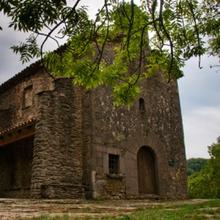
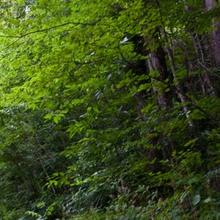
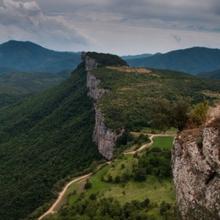
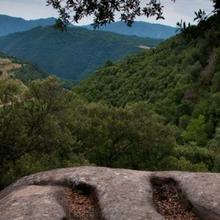
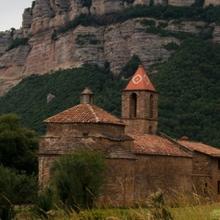
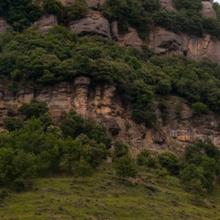
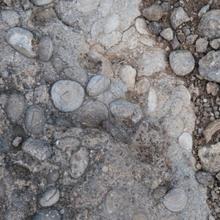
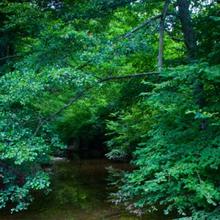
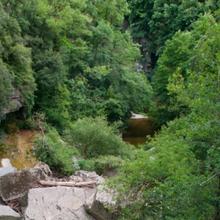
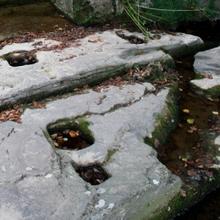

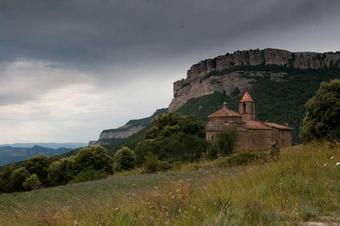
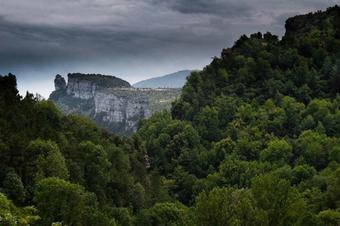
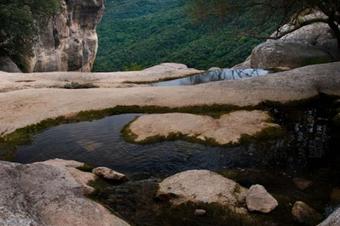

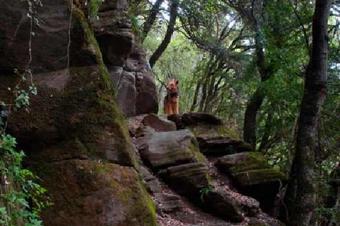
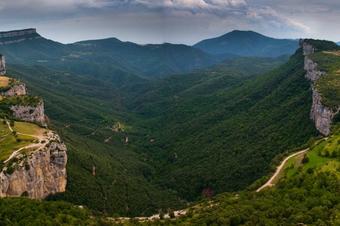
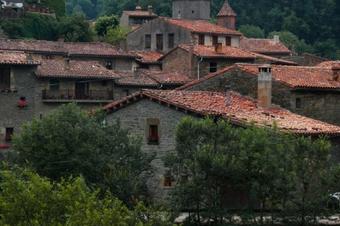
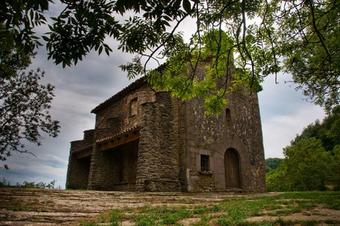
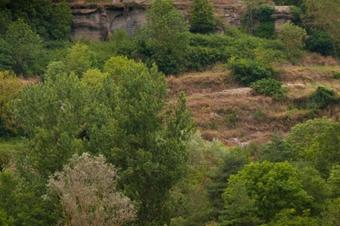
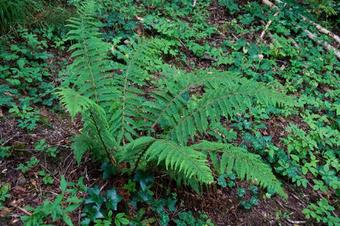
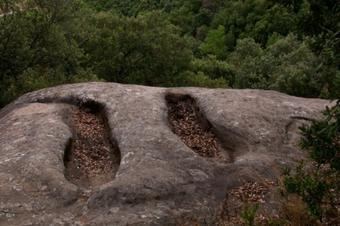
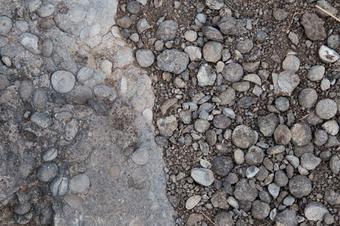
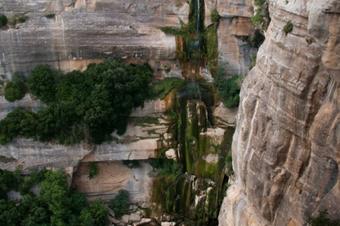
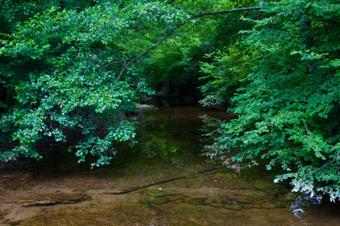

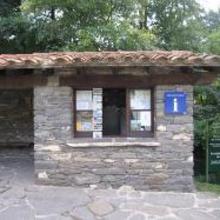
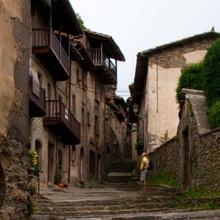
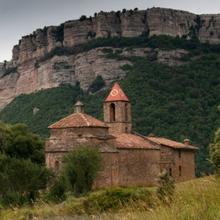
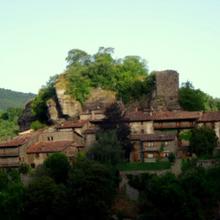
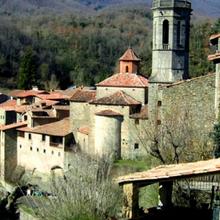
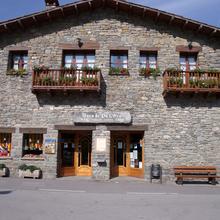


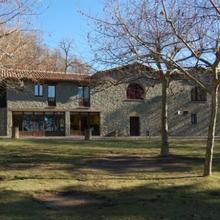

Una ruta molt agradable i amb un paisatge fantàstic. Si es va amb nens, es pot fer anada i tornada al Salt de Sallent pel mateix recorregut ja que no es gairé llarg (uns 40 min per recorregut) ni complicat.